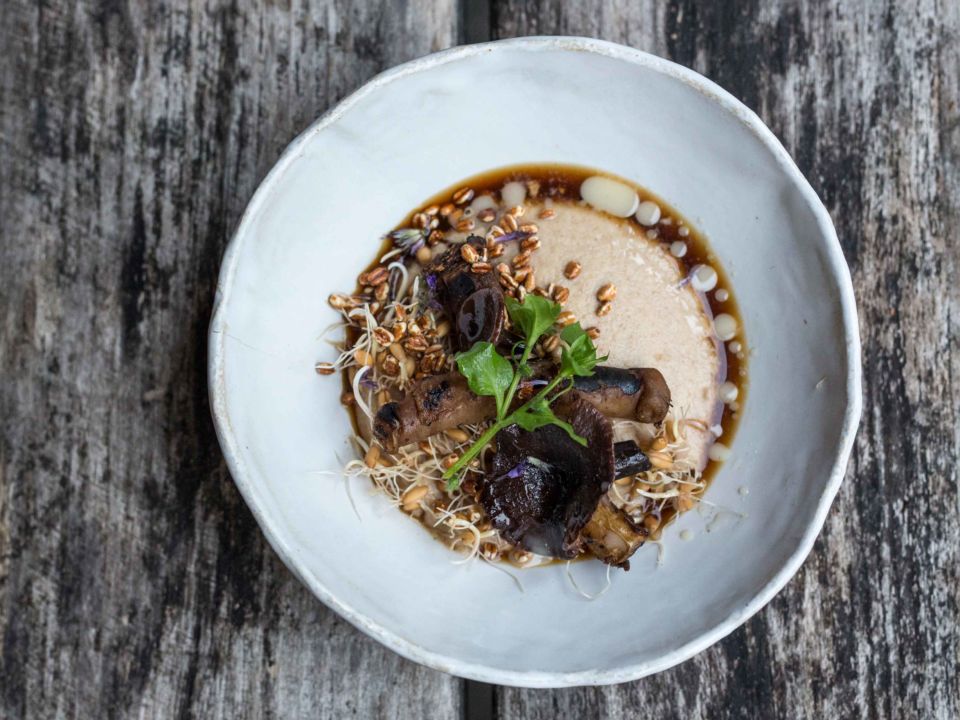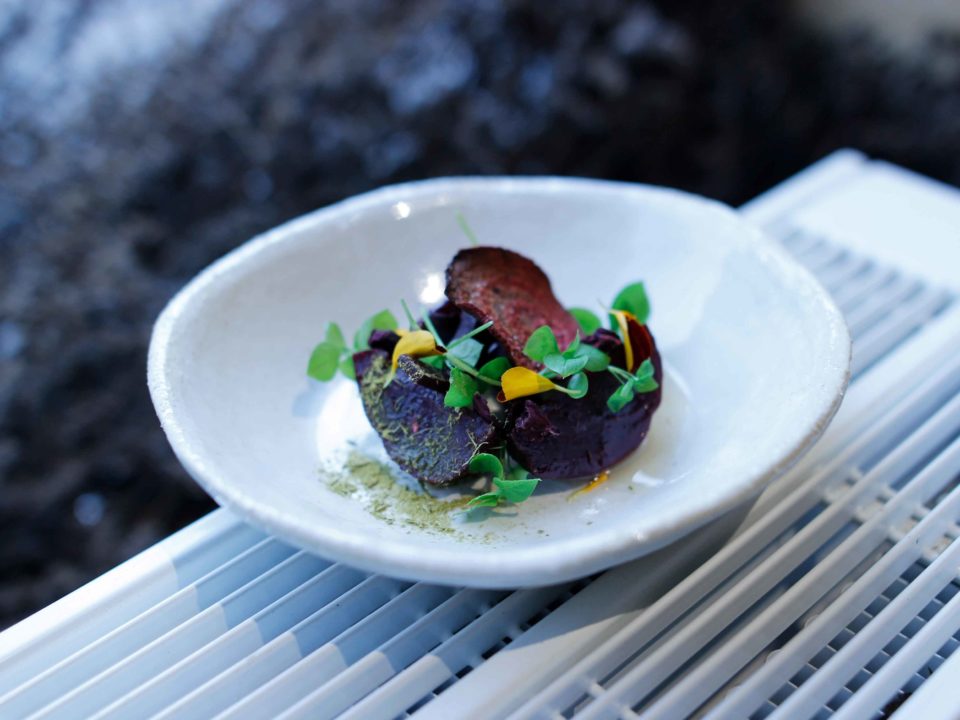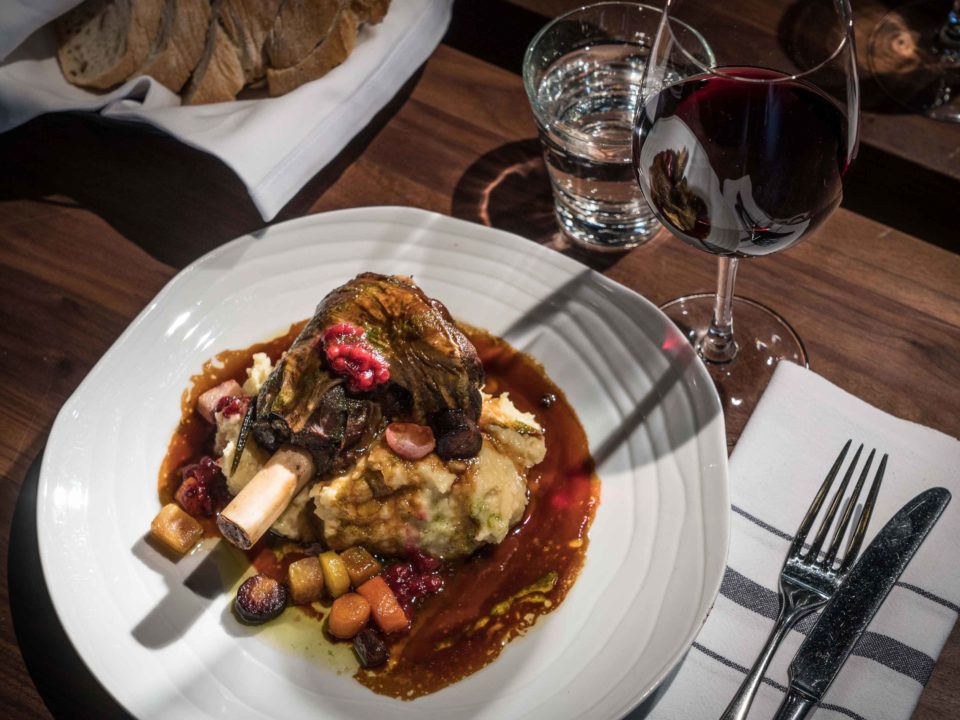The Arctic Circle can be unforgiving. I’m told temperatures vary from -30°C in winter to a summer high of 20°C(ish). When I first visited in a post-Christmas lull, the sun lied in till 11am before lazily clocking off at 2.30pm – leaving blush and burnt orange skies as it comes and goes, but little time to appreciate nature in full light. This moody seasonal purdah may be why Rovaniemi is a little absent from reality.
In 1984 it styled itself as Santa Claus’s home, and rather than question why a 5th-century Turkish monk lives in Finland (legend has it, his real home is in ear-shaped Korvatunturi, from where he can hear all children’s wishes – but Rovaniemi had an airport), locals have embraced him as their own.
‘Santa Express’ buses run from the airport to the Arctic Treehouse Hotel, neighbouring Santapark and the additional Santa’s Village complex. Glitzed-up Christmas trees abound like gaudy triffids and, within Santapark, (a former nuclear bunker given a surreally cheerful makeover) ‘elves’ still decorate cookies and sort fanmail.
It’s a welcome dose of the warm and fuzzies, and the Arctic Treehouse Hotel continues the fairytale, as guests of all ages recapture childhood joy by camping out in stilted forest hideaways – no knockabout backyard dens, but seriously Scandi-cool nests lined with blonde wood and furnished with reindeer-skin rugs, plush throws and sheepskin chairs.
The built-in-situ cuboid cabins are as eco-friendly and cosy as they come – floors are blissfully heated using natural gas, guests have 40-minute bursts of hot shower a day and each treehouse has an unobstructed forest view through a window wall. Destined to blow the minds of small Santa-seekers and solitude-craving couples alike, they’re snow-globes you can curl up and sleep in.
In the absence of abundant daylight, Rovaniemians have filled the dark with myth and magic – and the same is true of another comfort: food. Finland has carved out its own niche in New Nordic cuisine. It’s said to be a Danish import, kicked off by Copenhagen’s Noma, but the Finns, and Lapland’s indigenous Sámis, have arguably been doing New Nordic for millennia – turning survival sustenance into a gourmet experience that’s bang on-trend.

Long before chefs with neck tattoos were serving foragings in mossy terrariums, Earth-kind food trends – nose-to-tail, hyper-local, gluten-free, pickling, fermentation, low-impact harvesting and the like – were cultivated here from a deep connection to the land and sensitivity to seasonal shifts, bringing about a diet that’s only been gently refined since.
Arctic Treehouse Hotel’s Rakas Restaurant, headed up by English chef Jonathan Guppy, is modern in style, but aspects of its menu and methods are prehistoric. True, early Sámi settlers may not have practised such tasteful plating, but lake-caught perch, chaga (mushrooms) in herbs and reindeer with lingonberries, juniper and edible flowers are the sort of things you’ll find Nordic folkloric heroes feasting on when they’re not riling up gods and chasing maidens.
It’s a brutal awakening for children befriending Rudolf, but reindeer meat is big business here; so much so, there’s an annual competition for Best Reindeer Chef. I decided to get to know Santa’s little helpers better, visiting nearby Konttaniemi Farm for a reindeer safari and lesson in age-old ice-fishing for good measure.
Shoehorned into a sled, harnessed to the impressively antlered Lumo, we trot in state through glittering trees to a frosted lake, lie reindeer hides down on the ice and bore holes. The little rod I’m given looks like it fell out of a cracker and after 40 minutes there’s nary a nibble; meanwhile the locals – apparently salmon-whispering berry savants with Olympian-level resting heart rates – revel in natural isolation.
They embrace their reputation as contemporary hunter-gatherers, even catching a nap in -4°C winds during a lull in fishing, then regaling us with tales of ones that didn’t get away.
Later we cook sausages over a fire in a kota (a cabin for communal shelter and dining). We’re reassured that our empty-handedness is a result of too-warm weather and less-hungry fish, before tales of Edenic living: ethical hunting expeditions for food rather than sport, workers allowed to leave early in summer to pick berries, family baking to make the bread that gets denser the further north you go and how every part of a reindeer is divvied up into edibles (steaks and pâtés, sausages and blood pancakes, sweetbreads and jerky).
Chef Ossi Paloneva, a skilled forager who champions sustainable practices and runs Helsinki-based vegan restaurant Villd, says of Finland’s food nostalgia: ‘Finns have a strong connection to nature.
Almost everyone has some kind of summer cottage. We define home through calm places outside cities and a connection to a piece of land. Memories and emotions are connected to these places, surrounded by nature.’

‘This is why I love using wild ingredients’ he explains. ‘When presented purely on the plate they build emotional bridges to these places and moments lived in the past.’
Back at Arctic Treehouse Hotel, Rakas operates in a similar vein: chef Guppy tells me that the hotel owner’s father caught the perch they’re serving rye-breaded with summer-greens purée and roe butter at dinner. And he shot the moose in the Hunter’s sandwich I ordered for lunch (which comes with flavourful foraged mushrooms) – such a beast will keep the restaurant in meat for nearly a year.

The team work with professional berry-pickers and catch king crabs on Norway’s fjords – prepared as a delicious delicate broth with kohlrabi, celeriac, pickled apple and a generous chunks of claw meat. Preparing for winter is easy with autumn’s abundance, spring is more challenging, but a herb garden and apiary supplement hotel delicacies – greenhouses are in the pipeline, too.
It’s evident of a wider trend in Finland’s tech-driven food solutions. Paloneva highlights biotech company Solar Foods, who have developed a method to produce edible protein from electrolysed water and air (they’re also working on menus for Mars missions); but vertical farming, air potatoes, insect protein and more advances are on their way.
Paloneva is a champion of more off-piste ingredients, too: ‘We served molded celeriac and some customers were sceptical. Lichen and bladderwrack are pretty normal ingredients for us, too, but new to most diners’.

At Rakas, dishes can come dressed with reindeer-horn powder or spruce oil. As chef Guppy observes, Nordic cuisine redefines what a luxury dining experience is, priding authenticity and clean fresh flavours, in line with Lapland’s spotless record: after all, praises are sung about the impressively pure tap water here, and the World Health Organisation has consistently found some of the world’s least-polluted air in Lapland.
It marks a departure from, say, the buttery decadence of French cuisine or carb-loaded Italian cookery (an ironic twist in fortunes after Silvio Berlusconi and Jacques Chirac both once made withering remarks about Finnish food).
It’s Rovaniemi’s unique mix of culture and cuisine that makes it a must-go for spirit-raising meals. Like the Christmas miracle that turned this war-torn town into one of the most magical places on Earth (depending on your feelings about the festive season, that is), there’s a sprinkling of fairy-dust to long-dark dining, whether you’ve gathered loved ones for a fire-warmed meal in Arctic Treehouse Hotel’s kota, removed yourself from the main building to make you feel truly immersed, or if you’ve trekked out to its private shelter for twosomes, open to Northern Lights sightings, to dine by flickering flames.
While you’re wolfing down clean-from-the-lake salmon and nursing a Jalukka Mule that barks with local Jaloviina cut brandy, you’ll find in the absence something very nurturing indeed.
Now explore our smörgåsbord of Scandinavian hotels



